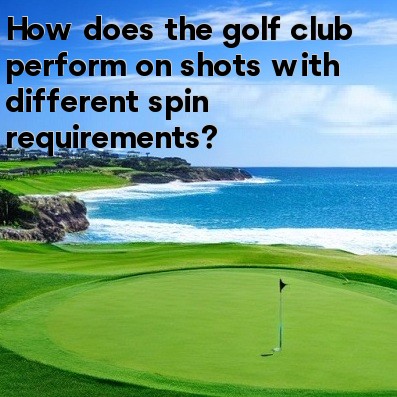
In golf, How does the golf club perform on shots with different spin requirements?
When it comes to golf, there are various factors that affect the spin of the golf ball, and one of the most important factors is the type of golf club used. Different clubs have different designs and characteristics, which influence how the ball reacts upon impact.
Let's explore how the golf club performs on shots with different spin requirements:
- Driver: The driver is primarily used for long shots off the tee, and generating backspin with a driver is not desirable for most players. The driver is designed to hit the ball with low spin, which helps maximize distance. The clubface is typically larger and has a lower loft angle, resulting in less backspin and more distance.
- Irons: Irons are versatile clubs used for a variety of shots, including approach shots to the green. Different irons have varying degrees of loft, and this loft plays a significant role in determining the spin rate of the ball. Lower-lofted irons, such as 3-irons or 4-irons, tend to produce less spin, resulting in a flatter trajectory. On the other hand, higher-lofted irons, like 9-irons or wedges, create more backspin, allowing the ball to stop quickly upon landing.
- Wedges: Wedges are specialized irons with even higher lofts, typically used for shots around the green. These clubs are designed to generate significant amounts of backspin, enabling the golfer to control the ball's trajectory precisely. By creating backspin, wedges allow golfers to stop the ball quickly on the green, helping with accuracy and precision.
- Fairway Woods: Fairway woods are generally used for longer shots from the fairway or rough. They have smaller heads and slightly higher lofts compared to drivers. Fairway woods can generate moderate amounts of backspin, which assists in getting the ball airborne and controlling the trajectory. However, they typically generate less spin than irons, which allows for more distance but slightly reduced control.
- Hybrids: Hybrids are a combination of irons and fairway woods, designed to provide forgiveness and versatility. The spin characteristics of hybrids can vary depending on their design and loft. Generally, hybrids generate more backspin than fairway woods but less spin compared to irons. This makes them suitable for a wide range of shots, offering both distance and control.
It's important to note that the golfer's swing technique and the quality of contact with the ball also play a significant role in determining the spin of the shot. The type of golf ball used also interacts with the clubface to create spin.
Understanding how different golf clubs perform on shots with various spin requirements is crucial for golfers to optimize their game. By selecting the appropriate club for each shot, golfers can align their desired spin outcome with the club's characteristics, ultimately improving their chances of success on the course.
In conclusion, the different types of golf clubs perform on shots with different spin requirements. The driver aims to minimize spin for maximum distance, irons and wedges provide more spin control for approach shots, fairway woods offer moderate spin for longer shots, and hybrids offer a versatile spin profile. Making informed club selections based on desired spin outcomes can greatly impact a golfer's overall performance.





